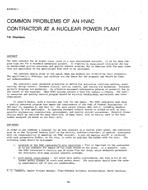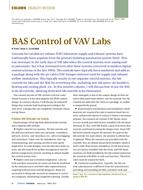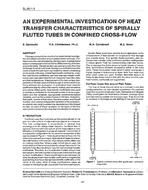The Heat Pump Centered Integrated Community Energy System (HP-C-ICES) is a high efficiency heat pump system which while supplying the heating requirements of an entire community during the winter uses as its heat source the latent heat of fusion of water gradually converting the water into ice. The ice is stored in a suitable ice bin and used the following summer for cooling the same buildings.
The HP-C-ICES is sensitive to climate. In northern latitudes where the winters may be severe and long, too much ice may be generated and the excess ice is usually melted with solar energy using inexpensive solar collectors radiators. In southern latitudes where the winter may be short and mild, not enough ice may be generated and supplementary conventional cooling may be necessary. Also large internal loads may cause a reduction in the generated ice.
The heat pump uses screw compressors usually electrically driven but gas or oil engine drive may also be employed. In the latter case heat recovery from the engine enhances the overall COP (heating and cooling effects divided by shaft work input) which may approach 7 for engine driven heat pumps as against 5 for the electrically driven heat pumps.
In a case study performed on the Market Square Complex, Washington, D.C., a project of 2,200,000 ft2 (205,000 m2), it ,vas found that the HP-C-ICES supplies 64% of the summer cooling requirements as “free” energy which is a by-product of heating. The HP-C-ICES also uses 51,000 ‘ 106 Btu (53,800 ‘ 106 kJ) of raw source energy compared to 85,000 ‘ 106 (89,675 ‘ 106 kJ) used by a conventional cooling and heating system of similar capacity. When further compared with this conventional system, the HP-C-ICES saves annually $162,000 in energy cost, has a 7-yr payback and a rate of return of 15%.
Product Details
- Published:
- 1980
- Number of Pages:
- 12
- File Size:
- 1 file , 1 MB
- Product Code(s):
- D-LA-80-12-4
- Note:
- This product is unavailable in Russia, Belarus


